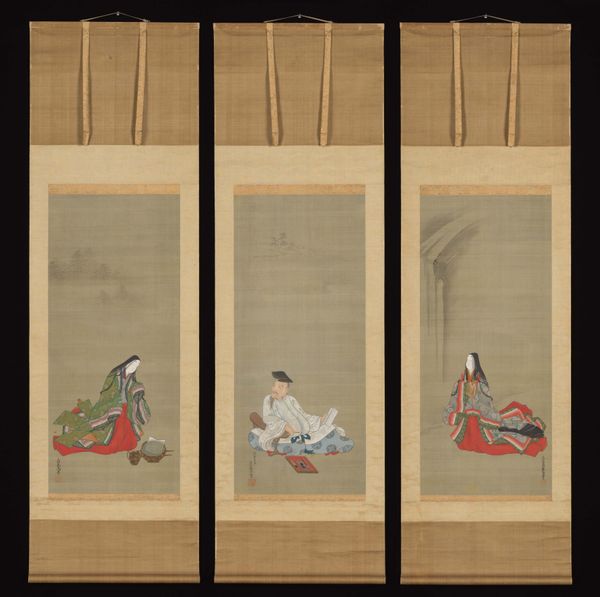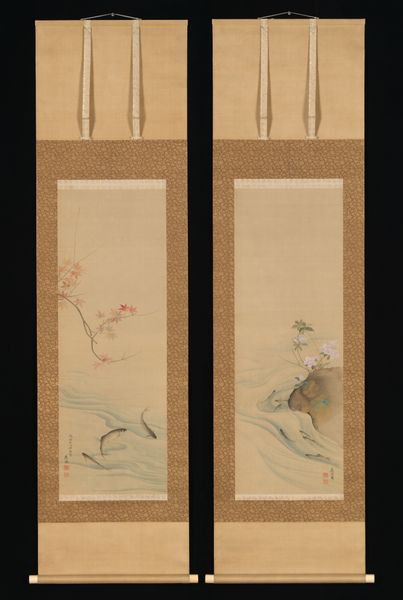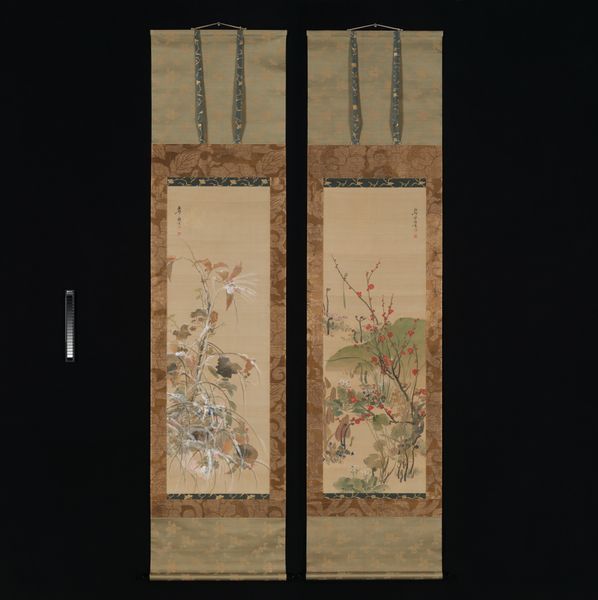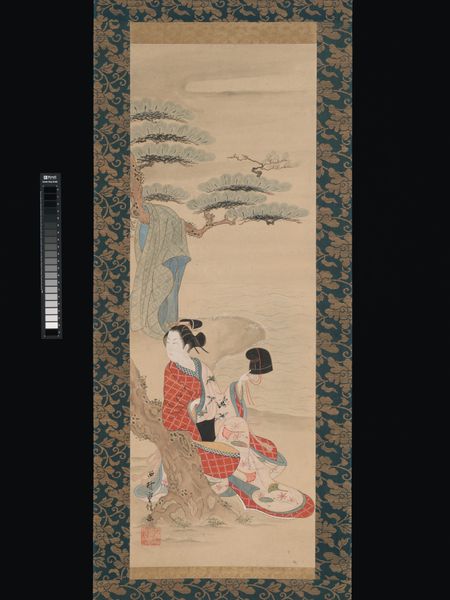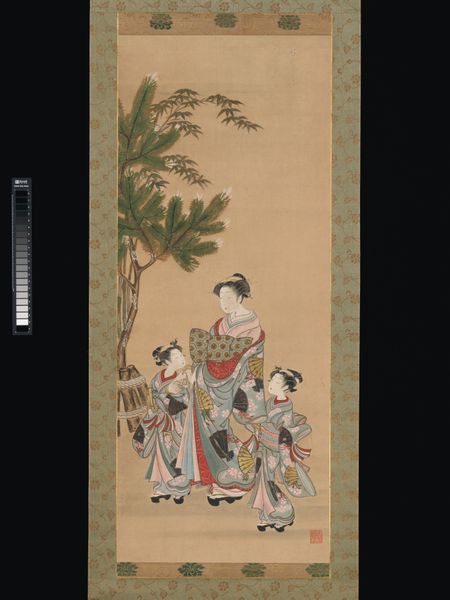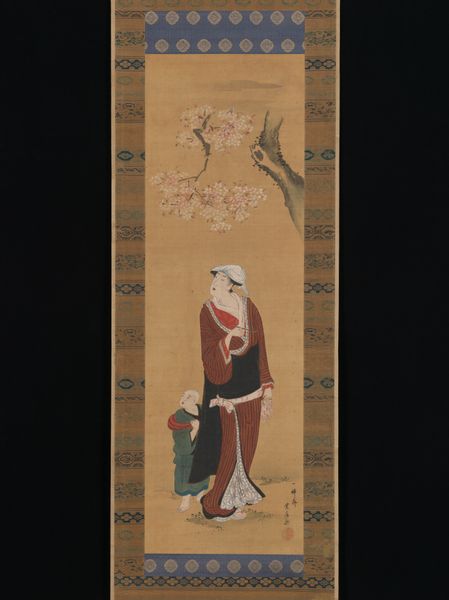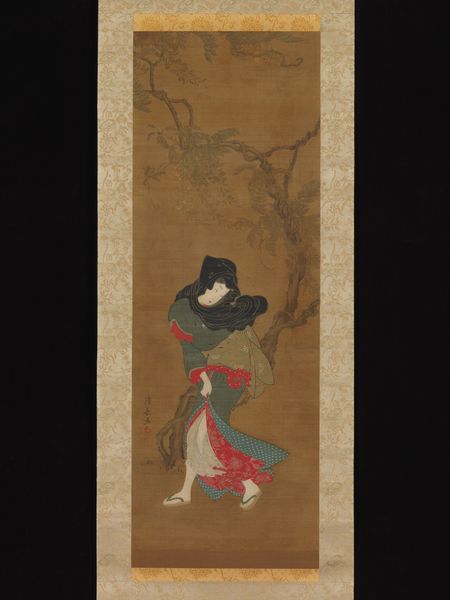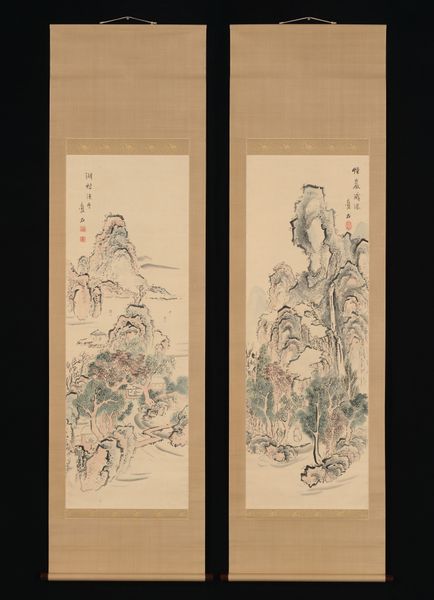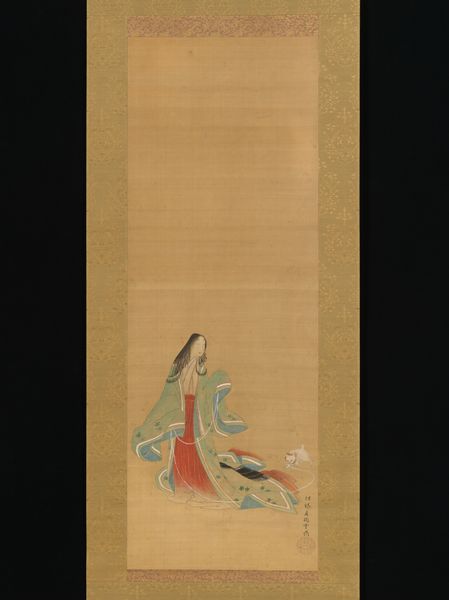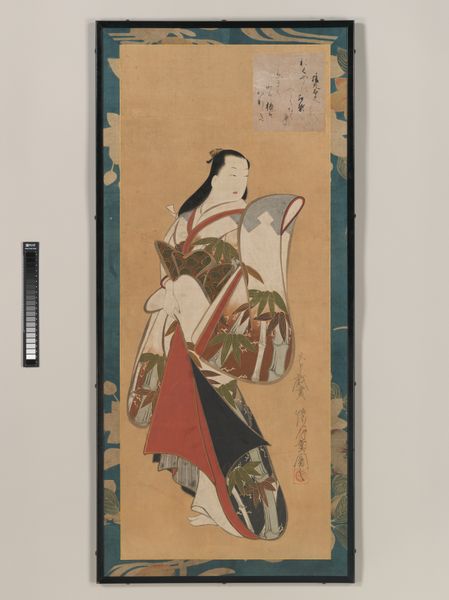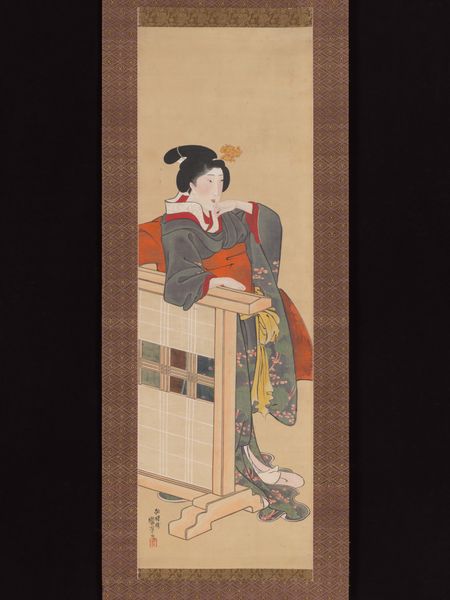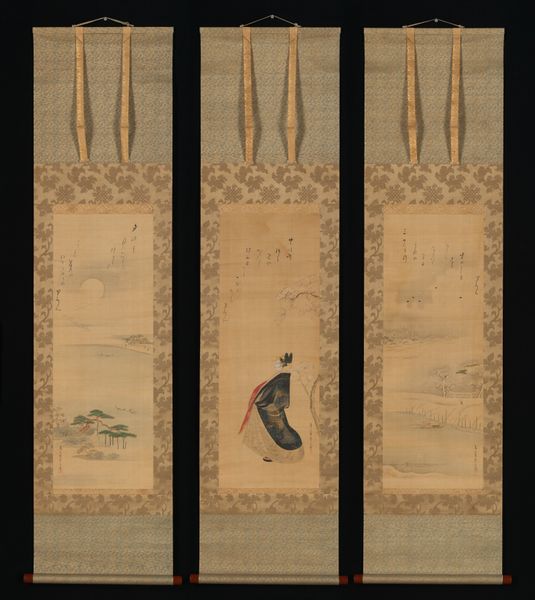
Yanji with Orchids and Yang Guifei with Peonies 1600 - 1800
0:00
0:00
painting
#
portrait
#
painting
#
asian-art
#
landscape
#
figuration
#
orientalism
Dimensions: Image (a): 43 3/16 × 21 15/16 in. (109.7 × 55.8 cm) Overall with mounting (a): 78 7/8 × 27 1/16 in. (200.3 × 68.8 cm) Overall with knobs (a): 78 7/8 × 29 5/16 in. (200.3 × 74.4 cm) Image (b): 43 3/16 × 21 15/16 in. (109.7 × 55.7 cm) Overall with mounting (b): 78 7/8 × 27 1/8 in. (200.3 × 68.9 cm) Overall with knobs (b): 78 7/8 × 29 5/16 in. (200.3 × 74.5 cm)
Copyright: Public Domain
Editor: Here we have two paintings, "Yanji with Orchids and Yang Guifei with Peonies," made sometime between 1600 and 1800, artist Genki. They're quite serene. I’m immediately drawn to the color palette; very muted. What do you see in the structure of these pieces? Curator: The composition is fundamentally balanced, is it not? Two vertical panels, each presenting a female figure within a carefully constructed environment. Note the deliberate placement of each figure and the arrangement of the associated flora. The spatial organization draws our eyes in specific direction, consider how it controls your perspective. Editor: I do see that the flowers direct my view toward each of the women! It seems…staged, somehow. Are we meant to compare these figures, do you think? Curator: "Staged" is an appropriate term. But not to be dismissed. Consider the artist’s use of line. Delicate, precise, defining form with minimal shading. How does this linearity affect the overall impact, the message, of the piece? The effect, while delicate, enhances an almost ethereal quality, does it not? Note also, the tension arising from the flatness of the picture plane and the subtle illusion of depth achieved through the arrangement of elements. Editor: Yes, there’s definitely a calculated tension there. I appreciate seeing how even these quiet portraits really activate a viewing experience. I'll look at art with new eyes! Curator: Precisely. It's through noticing these internal structures and tensions that the true dialogue between artwork and observer truly begins.
Comments
No comments
Be the first to comment and join the conversation on the ultimate creative platform.
